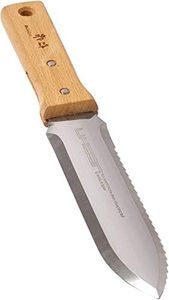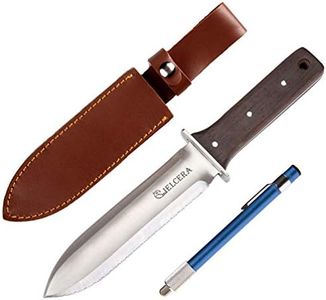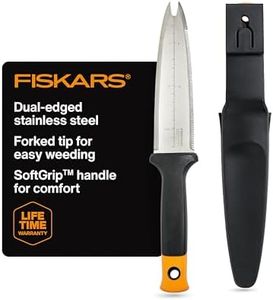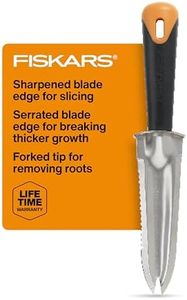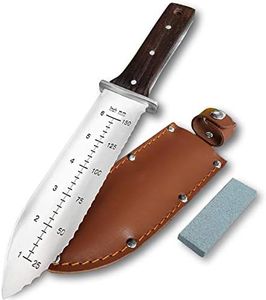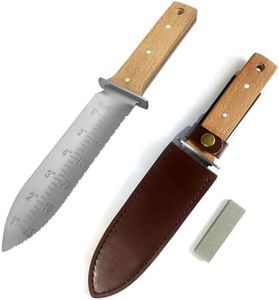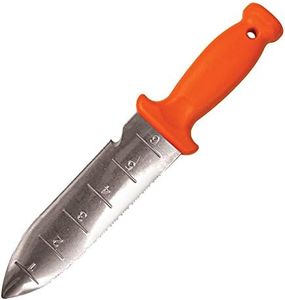We Use CookiesWe use cookies to enhance the security, performance,
functionality and for analytical and promotional activities. By continuing to browse this site you
are agreeing to our privacy policy
10 Best Soil Knife
From leading brands and best sellers available on the web.Buying Guide for the Best Soil Knife
Choosing the right soil knife is important for anyone who spends time working in the garden. A soil knife, sometimes called a garden knife, is a versatile hand tool used for digging, cutting, weeding, and planting. Picking a soil knife tailored to your gardening habits will make tasks easier, safer, and more enjoyable. To select the best one for your needs, it's important to understand the key features and how they relate to the types of gardening you'll be doing.Blade MaterialThe blade material determines the durability and sharpness of the soil knife. Common materials include stainless steel and carbon steel. Stainless steel is valued for being rust-resistant and easy to care for, making it suitable for those who might leave their tools outside or often work in wet soil. Carbon steel tends to be sharper and can cut through tough roots more easily, but it may rust if not dried and stored properly. If you prefer low maintenance and long-lasting sharpness, go for stainless steel. If your gardening involves a lot of tough soil and roots and you don't mind a bit of upkeep, carbon steel could be your choice.
Blade LengthThe length of the blade affects how deep and precise you can work. Shorter blades (around 5-6 inches) offer more control and are great for delicate work like weeding and transplanting small plants. Longer blades (about 7-8 inches) allow deeper digging and are helpful for tasks such as dividing perennials or removing larger weeds. Think about your typical garden tasks: if you work mostly with flower beds and potted plants, a shorter blade is likely best; if you often deal with deep-rooted weeds or need to dig deeper holes, a longer blade offers more versatility.
Blade EdgeSoil knives often have different types of edges: one side may be straight and sharp, while the other is serrated. The straight edge is useful for clean cuts and digging, while the serrated edge helps saw through tough roots and stems. Some soil knives have a dual-edged blade for multitasking. If you tend to do a lot of root cutting or encounter compact soil, a knife with a serrated side can be very useful. For mostly digging and delicate work, a plain edge may suffice.
Handle DesignThe handle affects comfort, grip, and control. Handles can be made from wood, plastic, or rubber. Ergonomic handles with non-slip grips or cushioned finishes reduce hand fatigue, which is important for longer gardening sessions or for people with weaker hand strength. If you have large hands or plan to use the knife for extended periods, look for a handle that feels comfortable and secure. Test how it feels in your grip if possible.
Measurement MarkingsSome soil knives have measurement markings on the blade, which help gauge depth when planting bulbs or seeds. This feature is especially handy for gardeners who like precision in their planting. If you like to plant at exact depths or follow planting guides closely, look for a knife with clear and easy-to-read markings. If you usually estimate by eye, this may not be a priority.
Sheath or HolsterA sheath or holster provides safety and protects the blade when not in use, making it easier to carry the knife around as you work. If you move frequently around the garden or like to keep your tools within reach, a sheath or holster adds convenience and helps maintain the tool’s condition. For those who want organization and safety, this is a helpful accessory.
